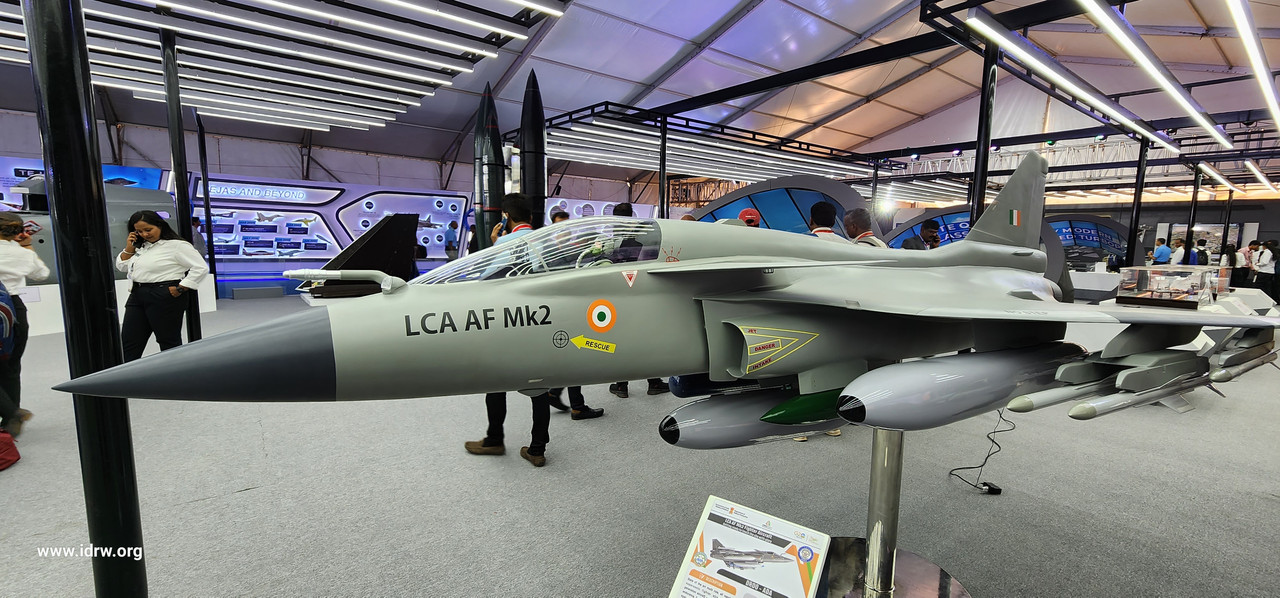SOURCE: IDRW.ORG


The Indian Air Force (IAF) is doubling down on its commitment to the Tejas MkII program, a cornerstone of India’s indigenous fighter jet ambitions, by advocating for a dedicated private sector-led production line. With the IAF funding 30% of the program’s estimated ?10,000 crore development cost, it is keen to accelerate the jet’s rollout and expand its fleet modernization plans.
Already committed to procuring 120 Tejas MkII jets to replace its ageing Mirage-2000 and MiG-29UPG aircraft starting in 2034-35, the IAF is now contemplating an upfront order for an additional 180 jets—potentially totaling 300 aircraft—if the Ministry of Defence (MoD) greenlights the private sector’s involvement. This bold move signals a transformative shift in India’s defense manufacturing ecosystem, blending public-private collaboration with strategic foresight.
HAL, the state-owned aerospace giant, has been the backbone of Tejas production, delivering Mk1 and Mk1A variants to the IAF. Yet, its production rate—currently capped at 16-20 jets annually—has struggled to keep pace with the IAF’s modernization demands, compounded by delays in earlier phases of the Tejas program. The IAF’s proposal for a private sector-led line for the MkII aims to address this bottleneck, ensuring faster delivery of the 120 committed jets and enabling the potential addition of 180 more.
Under this vision, at least 60 Tejas MkII jets would be manufactured by private companies, marking a significant departure from the HAL-centric model. The IAF has reportedly identified potential partners like Tata Advanced Systems Limited (TASL), Larsen & Toubro (L&T), and Reliance Defence, which have growing expertise in aerospace manufacturing. These firms could leverage their agility, modern facilities, and investment capacity to ramp up production, while HAL focuses on design refinement, initial batches, and technology transfer.
The IAF’s proposal hinges on MoD approval, a decision that will weigh financial, industrial, and strategic factors. Funding an expanded order of 300 jets, estimated at ?75,000-90,000 crore (assuming ?250-300 crore per jet), would require significant budgetary allocation, though spread over decades. The MoD must also navigate HAL’s role, as the public sector giant may resist ceding production share to private players despite its capacity constraints.
Technical challenges remain, too. The Tejas MkII’s development is still in progress, with engine integration, avionics testing, and certification pending with first flight planned in 2026. Any delays could push timelines beyond 2034, testing the IAF’s patience and private sector readiness. Yet, the IAF’s willingness to front-load orders signals confidence in the program and a desire to incentivize industry investment early.
NOTE : Article cannot be reproduced without written permission of idrw.org in any form even for YouTube Videos to avoid Copy right strikes. Websites doing illegal reproductions will get DMCA and Legal Notices.